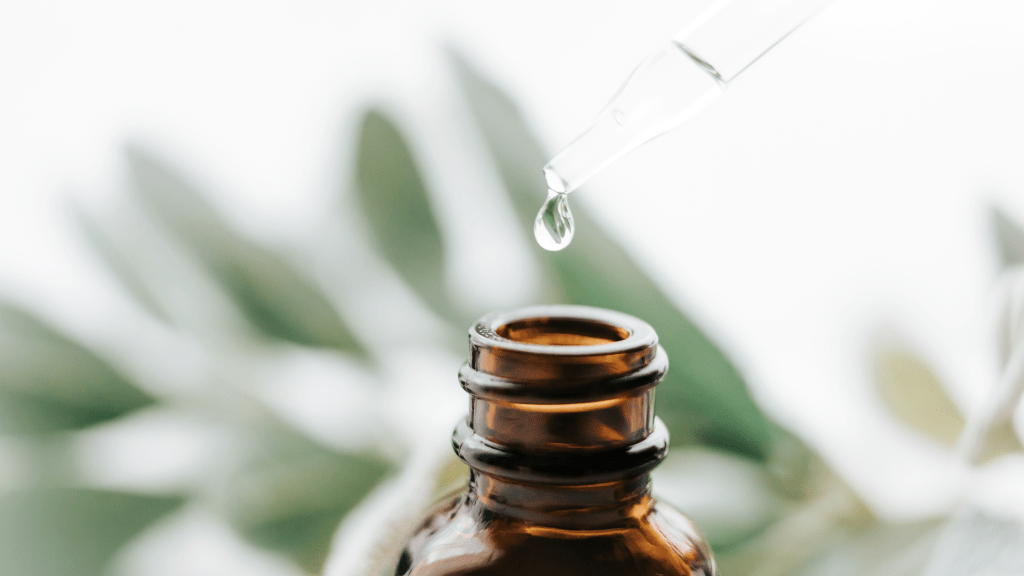Aromatherapy Awareness Week was earlier this month. Held in the second week of June, this is a national campaign held by the International Federation of Aromatherapists (IFA).
This week is to raise awareness for aromatherapy and how it can support health and well-being.
What is aromatherapy?
Aromatherapy is a complementary therapy that uses a range of natural plant extracts to promote health and well-being. This is the use of essential oils and can be in the form of:
What is an essential oil?
Essential Oils are derived from plants. They’re the plant’s own defence system to help protect themselves from being attacked by pests or prevent predators from eating them. Essential oils are a natural product but are highly toxic if not used correctly.
They are extracted from the plant material mainly by a steam distillation process. The oils can be found in the leaves, stems, roots, bark, and flowers depending on the plant.
Next time you pass a Rosemary or Lavender plant rub the leaves between your fingers. This will produce the essential oils of the plants.
What is a therapeutic property?
Each essential oil has a range of therapeutic properties which in turn could help alleviate symptoms. With these properties, you can create blends of different oils to create a stronger therapeutic blend.
Some of the therapeutic properties can be:
Anti-inflammatory – helps with pain in joints and muscles – for example, Chamomile
Anti-Viral/Anti-Microbial – Helps to fight off germs – for example, Eucalyptus
Antispasmodic – Helps to relieve cramps or spasms in the intestine or uterus – for example, Peppermint
Emmenagogue – Help to encourage and regulate menstrual flow – for example, Clary Sage
Sedative – help to reduce stress and calm the nervous system – for example, Frankincense
Stimulant – helps to increase energy levels – Basil
Safety & how to use the oils
Even though the oils are produced naturally in the plants it does not mean they are safe for humans. You need to use them safely and correctly as they are toxic. If used incorrectly, they can caused severe skin burns and even death. If in doubt at any time seek advice from a fully qualified Clinical Aromatherapist who will be happy to help.
The way you can identify you have the correct essential oil is by the way they are classified. This is under their latin names. Depending on how and were the plants are cultivated can change the plants chemical components due to their environment. An example of this is Thyme essential oil, this plant can have a chemotype of Linalool or Thymol. Both of these oils have different therapeutic properties and can be identified by their latin names. These are Thymus vulgaris ct linalool or Thymus vulgaris ct thymol.
When using any of the essential oils you should NEVER take them internally, always use them in one of the following ways:
Topically
ALWAYS mix with a carrier oil or white lotion before applying to the skin. Be aware that some oils can be photo-toxic. This means you are subject to potential sunburn if you have applied this essential oil and then been in the sun.
Inhalation
Bathing
Never put essential oils directly into a bath/shower as the essential oil and water do not mix. Therefore, you can mix the oil with some plain bubble bath or white lotion to help dissipate it into the water.
How much to use?
With essential oils, less is more. How the oils are being administered will have a factor in this. The dilution of a blend is usually between 1% – 3%. This all dependings on the oils chosen for the blend. However, also need to take into account if the person the blend is for has any medical conditions. Additionally, taking any prescribed or over the counter medication, as well as their age (children/elderly) all need to be taken into consideration.
Pregnant ladies should not apply essential oil blends to their skin. This is because the oils can seep into the blood system and then into the baby’s blood. Likewise, if breast feeding the oils can seep into the breast milk. Off the shelf beauty products from high street stores are staff to use.
If using any essential oils around pets (especially in room diffusers) you MUST always make sure the room is well-ventilated. A window should be open (even in winter) and the door should always be open for the pet to leave the room if the aroma is too much for them. One Essential oil in particular that is toxic to cats and dogs is Tea Tree. This can cause damage to their liver if they are subjected to this oil. However, be aware there are other oils that are toxic to pets.
How can oils change when mixed with another oil?
Want to learn more about Essential Oils?
If you are wanting to learn more about essential oils, their uses, blending techniques, and safe uses for essential oils, then why not enroll in the next Level One Essential Oil Fully Accredited Course. Or just looking for some basic understanding of the oils then look at our Intro to Essential Oils On Demand Workshops.
Additionally, you can shop a wide range of Essential Oils on my website.
Keep an eye out on our socials – Facebook, Instagram, and LinkedIn

